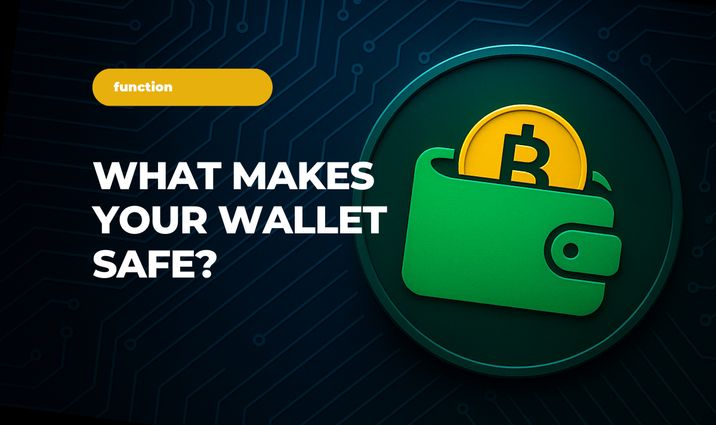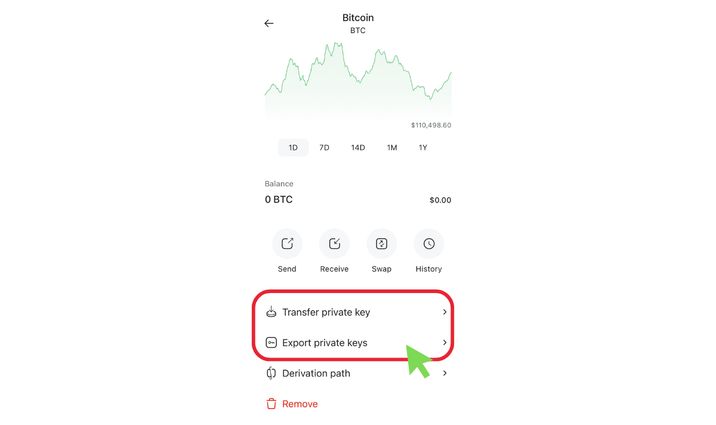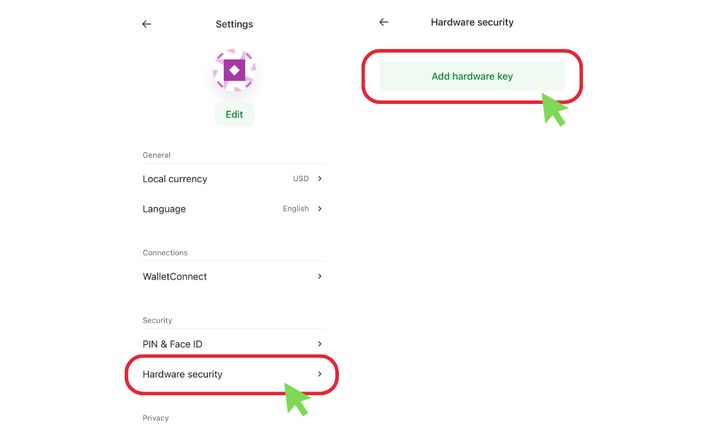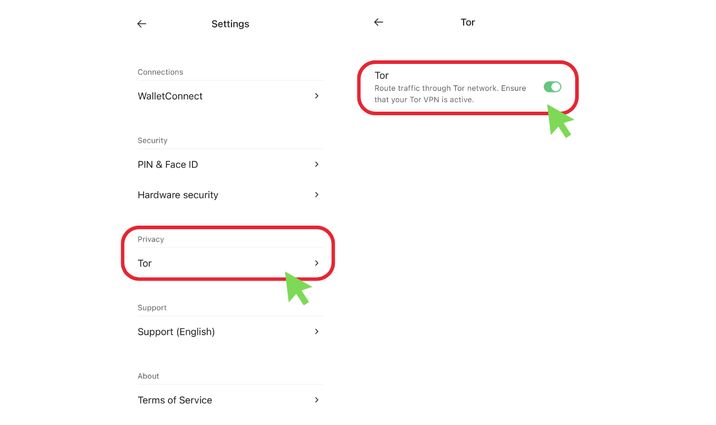How Safe Is Coin Wallet? A Deep Dive into Its Security

As of 2025, many popular wallets — including Trust Wallet, Exodus, and Atomic Wallet — offer a wide range of security features. All of them are designed to protect your assets.
In this article, we’ll break down what makes a wallet secure — using Coin Wallet as our example. We’ll also look at exactly which features make Coin Wallet one of the most secure software wallets on the market.
Key Takeaways
- Coin Wallet doesn't save your private keys on its server. This approach eliminates the risks associated with compromising centralized storage.
- The seed phrase completely replaces a login and password in Coin Wallet and provides access to funds even if the PIN or device is lost.
- Coin Wallet takes part in a Bug Bounty Program to help identify and fix vulnerabilities.
- The wallet applies AES-256, a modern symmetric block cipher, to encrypt private keys directly on your device.
- After 3 PIN errors, the session token on the server is erased. The only way to access the wallet is by using your passphrase.
- Coin Wallet supports external hardware security keys of the FIDO U2F/FIDO2 standard and SSL pinning.
- The wallet doesn’t require registration, KYC, email, or phone binding to operate.
Local Key Storage and Self-Custody
HD Architecture and Unique Addresses
Open-source and Audited
AES-256 Client-Side Encryption
The Passphrase and PIN Code
Hardware Two-Factor Authentication
SSL Certificate Pinning
No Tracking and KYC Required
The Bottom Line
Local Key Storage and Self-Custody
Coin Wallet is a self-custodial wallet: private keys are generated when the wallet is created and stored only on the user's device — they are never transferred to servers or third parties. This means that only you control access to your funds, and neither developers nor any services have the ability to seize or freeze them.
Most importantly, Coin Wallet doesn't save your private keys on its server. The keys are stored locally on the user’s device, such as a smartphone or personal computer. For the user, it also means full responsibility for the safety of their keys and wallet — no one will be able to restore access if the backup phrase is lost.
This approach eliminates the risks associated with compromising centralized storage: even if Coin Wallet servers are compromised, an attacker won’t be able to access your private keys — they’re simply not stored there.
Moreover, Coin Wallet only stores some non-sensitive user information in an encrypted backup on its servers, such as language preferences and fiat currency settings. This allows your preferences to sync across all your devices.
And that’s why we say, “Self-custody is the future”.
HD Architecture and Unique Addresses
The Coin Wallet implements a hierarchical deterministic (HD) architecture based on the BIP32/BIP44 standard. This means that from a seed phrase, a tree of an unlimited number of addresses is generated.
A mnemonic phrase (seed phrase) is generated during wallet creation based on the BIP39 standard using 12 words. This passphrase acts as a master key from which all private keys for different currencies are deterministically derived.
The wallet automatically creates a new cryptocurrency address for each transaction (especially for incoming payments), which increases privacy — making it harder to link your transactions together.
Here's how the creation process looks:
- Your private keys are created from the passphrase when you register with Coin Wallet.
- Each coin has its own address, so Coin Wallet addresses are created from your private keys.
- Your passphrase → your private keys → Coin Wallet addresses.

Coin Wallet doesn't use the concept of an "account password" or a centralized account. Instead, the seed phrase completely replaces a login and password and provides access to your funds — even if your PIN or device is lost.
This approach is widely used in the industry and is considered a security best practice: rotating addresses makes it harder to track a user's balance and helps prevent address reuse, which could facilitate attacks and phishing.
From an architectural perspective, this is a strong point: BIP39's 12- or 24-word phrases are considered cryptographically strong and virtually unbreakable by brute-force methods, unlike regular passwords.
Coin Wallet is also compatible with industry standards and supports importing existing 12-, 15-, 18-, 21-, or 24-word phrases from other wallets. This lets you migrate to Coin Wallet using your existing passphrase — or restore your wallet in a third-party app if needed — increasing both security and flexibility.
A quick reminder: the seed phrase should be written down and stored offline (e.g., on paper). It is the only spare key for wallet recovery.
Open-source and Audited
The Coin Wallet codebase is open-source — the project is available on GitHub. This allows the community to examine the source code for vulnerabilities and ensure there are no hidden backdoors.
In addition, the developers conduct regular security audits of their software. Coin Wallet also launched a Bug Bounty Program, rewarding white-hat hackers for responsibly disclosing vulnerabilities.
Transparency and independent checks put Coin Wallet among the most trusted wallets. Many competitors also have open-source code — but not all run active bug bounty programs. Coin Wallet has such a program, reflecting a strong commitment to security and continuous improvement of its defenses.
AES-256 Client-Side Encryption
AES-256 is a modern symmetric block cipher with a key length of 256 bits, which is considered highly secure and is widely used in the industry. Coin Wallet uses it to encrypt private keys directly on the user's device.
This means that even if attackers gain access to your app files or backup data, they won’t be able to extract private keys or sensitive information without the decryption key.
Coin Wallet ensures that all data storage — such as local databases, cache, and settings — is encrypted at the device level. This puts it in line with best practices — many advanced wallets (like Blockchain.com and Coinbase Wallet) also use AES-256 encryption.
The Passphrase and PIN Code
As we said earlier, your passphrase is used to derive your master private key on any device. However, Coin Wallet requires you to set a 4-digit PIN, which is tied to your device.
We don't use your PIN to encrypt your master key directly. Instead, your PIN is sent to the Coin Wallet server in exchange for a long token, which is used to decrypt your encrypted master key stored locally on your device.
If the PIN is entered incorrectly three times, the long token on the server is erased, which renders the locally encrypted version of the master key useless. The only way to access your wallet then will be by using your passphrase.
This mechanism significantly increases security: an attacker who gets hold of your device will not be able to endlessly guess the PIN after 3 errors; the data will become useless without the original passphrase.
Essentially, Coin Wallet implements remote blocking against PIN brute-force attacks, similar to how bank cards block access after several incorrect attempts.
Other mobile wallets often rely only on offline PIN verification with time delays between attempts. In contrast, Coin Wallet's server-side tokenization and key destruction approach makes brute-force attacks nearly impossible — though it does require an Internet connection at login.
Moreover, Coin Wallet includes an additional layer of security: biometric verification (Face ID and Touch ID). It's an optional feature. You can read more about it in our article.

Hardware Two-Factor Authentication
One of Coin Wallet’s key advantages is its support for external hardware security keys that follow the FIDO U2F/FIDO2 standard. Simply put, the wallet can be configured to require a physical USB/NFC key to confirm transactions.
With 2FA enabled, the wallet will request confirmation using the hardware key before performing any sensitive actions — such as sending a transaction, exporting private keys, or changing security settings. The hardware key generates a cryptographic signature (via the U2F protocol) that verifies the owner has authorized the action.
Without this key, an attacker — even with access to the device and PIN — won’t be able to access your funds. A physical token is required.

Note that a hardware U2F key is not the same as a hardware wallet. In the former case, the key serves only as a confirmation tool — it stores credentials for authentication but does not hold your crypto funds. In contrast, hardware wallets like Ledger or Trezor store your private blockchain keys directly.
SSL Certificate Pinning
Coin Wallet implements certificate pinning (SSL pinning) to protect client-server connections. This protects connections from a “certificate spoofing” attack, where a compromised certificate authority can issue a fraudster a fake SSL certificate on behalf of Coin Wallet.
The wallet is hardcoded with information about the real server certificate. Any attempt by an intermediary to substitute it will be detected by the application, and the connection will be blocked.
In practice, this means that even if you accidentally visit a fake site with a similar domain, Coin Wallet will detect the illegitimate certificate and prevent any data or seed phrase leaks.
In addition to SSL pinning, Coin Wallet also provides an official web wallet mirror on the Tor network (.onion). Users can make transactions using the Tor Browser or enable Tor/VPN routing directly in the app’s settings.
This provides several benefits:
- Anonymity. It makes it difficult to track your IP address, geolocation, or user activity.
- Accessibility. The Tor network allows access to the wallet even if the main site is censored or blocked.
- DNS-level protection against phishing. It’s impossible to spoof the DNS record of a .onion domain and extremely difficult to fake the address itself.
- Extra security in unsafe networks. Using Tor with Coin Wallet adds another layer of protection when accessing the wallet on untrusted networks.

No Tracking and KYC Required
To reduce the risks of social engineering and data leaks, Coin Wallet is designed to minimize the amount of user data it collects. The wallet doesn’t require registration, KYC, email, or phone number linking to work.
You don't provide personal information, which makes it harder for scammers to target you through things like email hacking or fake customer support.
Together, anonymity and the lack of tracking increase your security — you remain invisible to most mass phishing schemes targeting user databases.
The Bottom Line
In general, Coin Wallet’s policy is to simplify the user’s experience as much as possible, placing the main cryptographic complexity on the seed phrase and internal mechanisms. But the responsibility for the secret phrase lies entirely with the owner.
Coin Wallet doesn’t have a classic account password, eliminating the risks associated with weak user credentials. Instead, security is provided by a combination of factors: a long cryptographic seed phrase, a 4-digit PIN for everyday use, and optional biometric authentication.
The PIN is fixed at 4 digits, and users can’t set a longer or alphanumeric password in the app. Such minimalism is a conscious compromise between convenience and security.
As a result, Coin Wallet is a synonym for user-friendliness, anonymity, and safety.